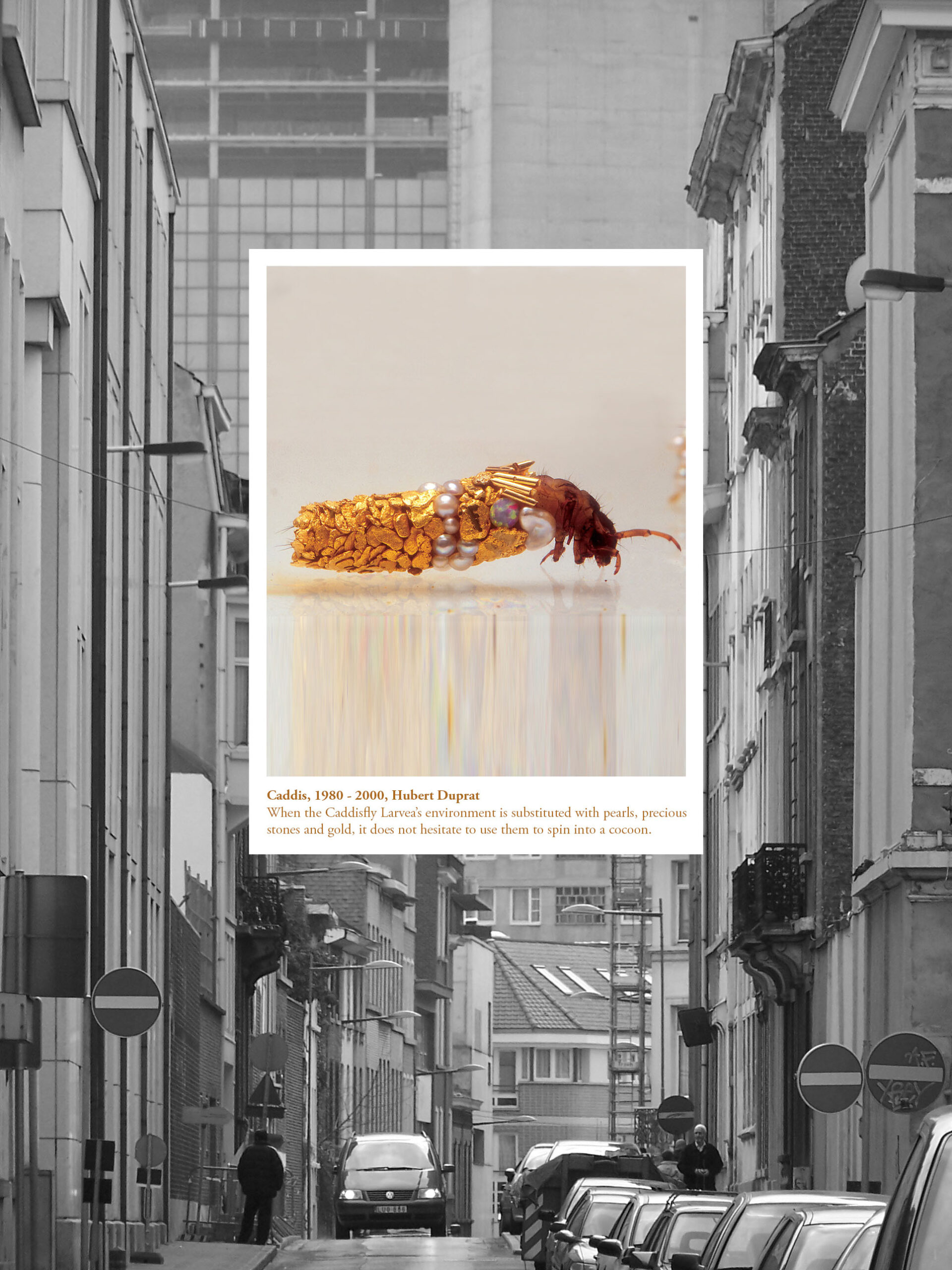ROADSIDE PICNIC
MASTER DISSERTATION studio 2022-2023
Tutors : Johannes Berry and Johan Nielsen
Campus: Brussels
Language: EN
Description of the project:
The studio turns unfamiliarity and strangeness into positive and operative notions. It explores the figure of the architect who doesn’t know, the architect as an unexpected guest who can bring fresh perspectives into a determined situation. That also means an architect who accepts to work in delicate and uncomfortable conditions. Here we can refer to the traits of the stranger described by Georg Simmel(Simmel 1999). The foreign architect reorganizes nearness and remoteness, generating tensions because the architect has in common with locals what is quite general, while the architect stresses that which is not common. As an invited, the stranger receives openness and confidence from the community, which the architect tends to be a member of. However, the stranger’s status provides an objectivity, made of both detachment and engagement.
With this objectivity, things have equal value, because the stranger is aware of the risks of a preconceived perspective. Like the items left behind after a picnic, might seem ordinary to those humans who left it behind, but incomprehensible to the animals who find them (Strugatsky 1977). In this way materials, whether it be gold, plastic or wood have equal interest, as the focus shifts to their potential. So too we can look at the environment around us as a stranger, and find new perspectives and potentials in things (Dick 1985). A balcony can become a bedroom or a kitchen, or a single story modernist patio dwelling can become a self-built four story apartment building, with a commercial function on the ground level (Avermaete 2010),and so on.
The perspective of the stranger, provides us with a way of looking at things we know, in new ways. The students will be put in the condition of being a stranger in their own place. This territory will define the context of their approach.
This way of looking, will give insights into how to deal with limited availability of materials and construction techniques, in novel ways. Not with the ambition to find new technologies, but rather new forms of architecture.
Expected output:
N°1: The project is a building for the neighborhood, defined by the students’ research. A master thesis, as an engagement, and gift to the community, in the form of a proposal or even a realization.
N°2: The project must be situated in a radius of 2km around the student’s home.
N°3: The materials used to build the project must be found in a radius of 2km around the student’s home.
N°4: The know-how to construct the project must be found in a radius of 2km around the student’s home. Either through personal conversation with locals, or through construction manuals.
References/Further reading:
A Way of Looking
Avermaete, Tom. 2010. Colonial Modern: Aesthetics of the Past, Rebellions for the Future, (London: Black Dog Press)
Dick, Phillip .K. 1978. How to Build a Universe That Doesn’t Fall Apart Two Days Later. Speech given in 1978 (The Estate of Philip K. Dick: 1985)
Simmel, Georg. 1999 . ‘The stranger’, in Social theory: the multicultural and classic readings, ed. by Charles Lemert (Boulder: Westview Press), pp.184–189.
Strugatsky, Arkady & Boris. 1977. Пикникнаобочине [Roadside Picnic], Translated by Bouis, Antonina W. (New York: Macmillan Publisher, Ltd.)
A Way of Doing
Egenter, Nold. 1992. Architectural Anthropology Research Series: Volume 1: The Present Relevance of the Primitive in Architecture, (Lausanne: Structura Mundi)
Moravánszky, Ákos. 2017. Metamorphism: Material Change in Architecture, (Berlin: Walter de Gruyter)
Crawford, Matthew B. 2010. Shop Class as Soulcraft: An Inquiry into the Value of Work, (London: Penguin Books)
Appendix (pdf).

